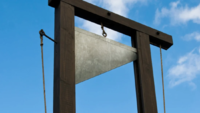Of course it does - in the sense of safety razor !
I am relativly new wet shaver. I use both safety razor and shavette just as much. I am beginning to think about parameters of safety razor and shavette. Does it have any significance of blade gap and exposure ? I mean for shavette/straight razor these parameters are indefinite. Regardless of that shavette/straight can be much more mild and comfortable. Everythinh is in the hands of user !
I am relativly new wet shaver. I use both safety razor and shavette just as much. I am beginning to think about parameters of safety razor and shavette. Does it have any significance of blade gap and exposure ? I mean for shavette/straight razor these parameters are indefinite. Regardless of that shavette/straight can be much more mild and comfortable. Everythinh is in the hands of user !


